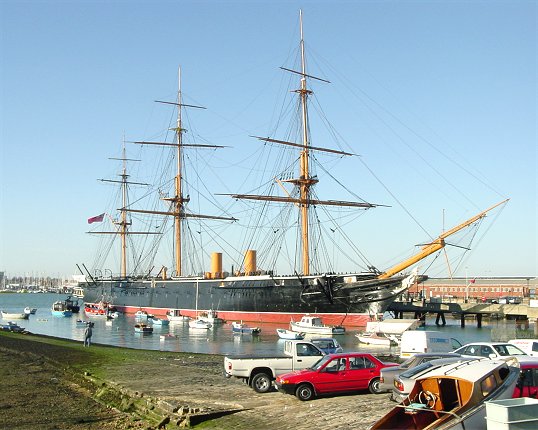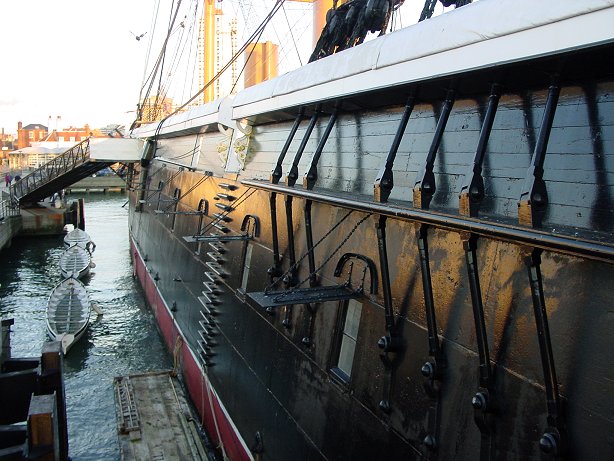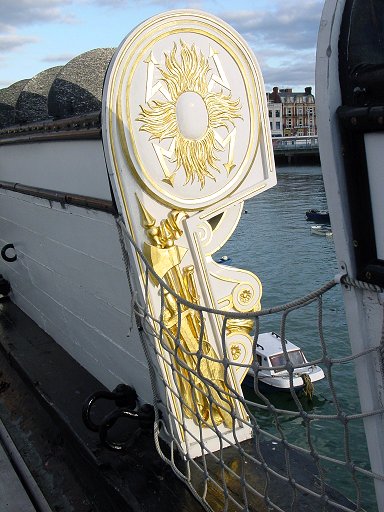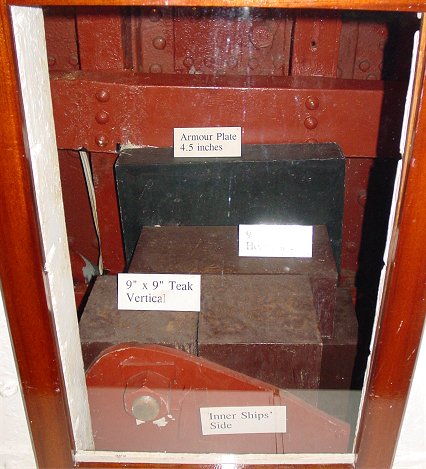
H.M.S. Warrior
One of the truly revolutionary ships of history, H.M.S. Warrior was built in 1860 in response to French naval developments, specifically the start of construction in 1858 of La Gloire, with five inches of armor plate. But Warrior would be not merely a wooden ship clad with iron armor, she was built with a hull of iron. To increase armor protection, and to help support the weight of the engines, Warrior was double bottomed, with iron inner and outer hulls with wood in between. Watertight bulkheads were pioneered in the ship, limiting the danger of sinking, and an armored citadel protected much of the ship. Unlike preceding wooden ships of the line, Warrior housed a relatively limited number of widely spaced large guns on a single deck. Twenty six 68 pounder smoothbores and ten 110 pounder Armstrong breech loading rifled guns made Warrior far superior to her contemporaries. Built in a time when steam power was not yet perfected, Warrior's primary power source was still the wind, with steam used only when needed.
Although Warrior made every other warship obsolete, she herself became obsolete within a few short years. The Royal Navy launched a turreted warship in 1866, and in 1871 the British launched a warship equipped with steam engines good enough and reliable enough to completely replace wind propulsion. Warrior was retired from front line service. She was then used for miscellaneous purposes, lastly as an oil jetty, and escaped scrapping mainly out of luck. Preservationists saved the ship, restored it, and it is now on display in the historic Portsmouth dockyard.

Funnels would be lowered and the propeller raised for sailing. Warrior is 420 feet long and 58 feet wide.



Despite being an impressive technological leap forward, Warrior featured some ornamentation, something which had been much more common on preceding warships. Because steering technology hadn't matched the increased weight Warrior was difficult to steer and once accidentally deposited her figurehead on another ship.

In the citadel section, the ship was protected by 4.5 inches of wrought iron armor on the exterior followed by 18 inches of teak arranged half horizontally and half vertically then by 5/8th inch iron inner hull and a final layer of pine. All this could resist point blank fire from 68 pounders like those used on the ship.
Sections
Links:
http://www.stvincent.ac.uk/Heritage/Warrior/index.html
http://www.hmswarrior.org/construct3.htm
http://www.battleships-cruisers.co.uk/warrior_class.htm
Back to John's Military History Tour of Britain